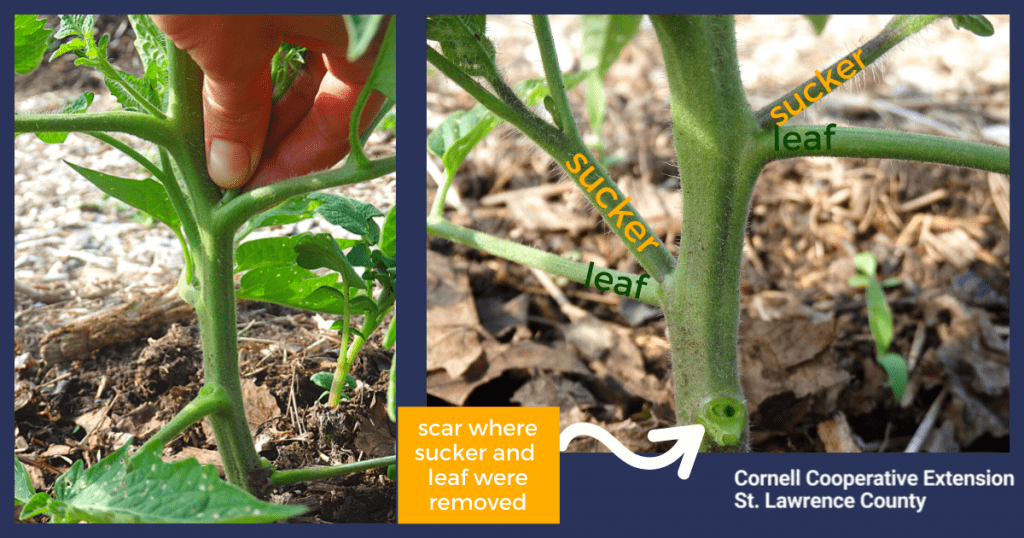If you haven’t pruned your tomatoes before, now is a great time to start! This simple process has many advantages including improved air circulation and better light penetration, both of which can prevent disease. It also yields good-sized fruit and more manageable plants that take up less space and are easier to trellis.
The only tool you will need is clean pruners. You can play it safe by keeping some disinfectant handy to sterilize your pruners between plants, or between garden beds if you’re concerned about spreading disease. If you have a lot of plants to prune, wear gloves to keep your hands from turning dark green by the end.
- The first step is to identify the parts of your tomato plant. Find the main stem and look for the places where suckers and leaves branch off. The leaf has leaflets and points straight out or slightly down, whereas the sucker points slightly up and is located above the leaf. Together they make a “K” shape with the main stem (see photo). Suckers can be tiny or large and have their own leaves, suckers, and even fruit clusters!
 Now identify the fruit clusters, which can have buds, yellow flowers, or even small green tomatoes.
Now identify the fruit clusters, which can have buds, yellow flowers, or even small green tomatoes.- Experts advise pruning indeterminate tomatoes to two vigorous stems: the main stem and one sucker. This will give the plant a “Y” shape.
- To determine which sucker to leave, locate the lowest fruit cluster and leave the sucker immediately below that. Remove all other suckers from the plant. Small suckers can be snapped by pulling to the side with your fingers, but use your clean pruners for larger suckers, particularly the ones at the bottom of the plant.
- With determinate tomatoes (check the seed packet, label, or look up the variety if you’re not sure) remove all suckers below the lowest fruit cluster.
- Lastly, remove the lower leaves that touch the ground or are yellowing. This reduces the chance for soil-borne diseases to reach the plant leaves and fruit. If you have powdered cinnamon at home, apply a little bit on the exposed part of the stem after the cut. Cinnamon is a fungicide and can help prevent diseases from reaching your plant after pruning.
Yields will increase and the chance of disease will decrease with regular pruning.
If you’re in St. Lawrence County, contact our Growline for gardening advice at SLCGrowline@gmail.com. Our Master Gardener Volunteers will happily answer your questions.
Erica LaFountain is Community Horticulture Educator and Master Gardener Coordinator for St. Lawrence County. She has a background in organic vegetable farming, gardening, and orcharding and has a homestead in Potsdam, NY.

